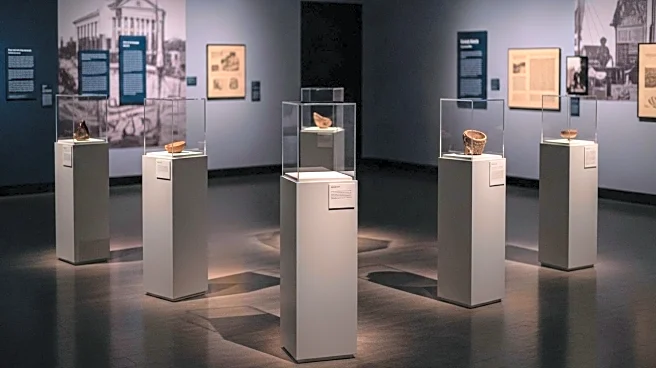What's Happening?
The Smithsonian American Art Museum's exhibition, 'The Shape of Power: Stories of Race and American Sculpture,' has concluded after facing criticism from President Trump. The exhibition, which began planning in 2019, aimed to explore themes of race and power through American sculpture. It included significant works such as Hiram Powers's 'The Greek Slave' and Ferdinand Pettrich's 'The Dying Tecumseh.' Despite its closure, the exhibition was targeted by the Trump administration for allegedly portraying American values as harmful. The exhibition was well-received by visitors, with positive feedback recorded in public comment books.
Why It's Important?
The exhibition highlights the ongoing debate over race and identity in America, reflecting broader societal issues. The criticism from the Trump administration underscores the tension between political agendas and cultural institutions. The exhibition's success in engaging visitors suggests a public interest in confronting complex historical narratives. As the Smithsonian continues to navigate these challenges, its role in fostering dialogue and education on sensitive topics remains crucial. The exhibition's reception indicates a willingness among the public to engage with difficult subjects, emphasizing the importance of preserving academic freedom and cultural exploration.
Beyond the Headlines
The exhibition raises questions about the role of museums in addressing controversial topics and the impact of political influence on cultural programming. The Smithsonian's commitment to exploring complex themes, despite external pressures, highlights the importance of maintaining independence in cultural institutions. The exhibition's focus on race as a social construct challenges long-standing perceptions, encouraging visitors to reconsider historical narratives and their implications for contemporary society.












